"All my wishes end where I hope my days will end...at Monticello"
Thos. Jefferson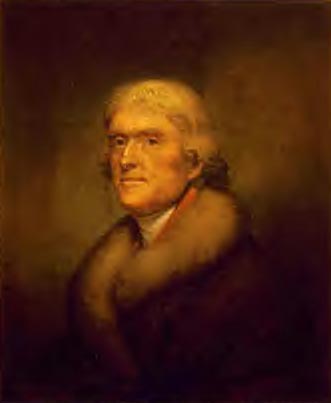

Third President of the United States
Scholar
Architect
Gentleman FarmerLet me describe to you a man, not yet forty, tall and with a mild and pleasing countenance . . . An American, who without ever having quitted his own country, is at once a musician, skilled in drawing; a geometrician, an astronomer, a natural philosopher, legislator, and statesman . . . Sometimes natural philosophy, at others politicks or the arts were the topicks of our conversation, for no object had escaped Mr. Jefferson; and it seemed as if from his youth he had placed his mind, as he has done his house, on an elevated situation, from which he might contemplate the universe.
Description of a visit to Thomas Jefferson at Monticello in 1782 from Travels in North-America, in the Years 1780, 1781, and 1782 by the Marquis de Chastellux.
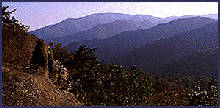
Thomas Jefferson was born April 13, 1743 in Shadwell, Albemarle County, Virginia, in the beautiful Blue Ridge Mountains. His parents, Peter and Jane Randolph Jefferson, (the Randolphs were one of Virginia's first families) raised six children in Shadwell. Unfortunately, the home burned to the ground in 1770.

Jefferson was to form a lifelong bond with nearby Charlottesville and would come to play a major role in its development. But, I get ahead of myself a bit.
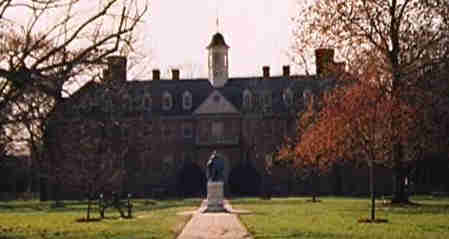
Very little is written about Thomas Jefferson's early childhood. We know his father was a successful planter and it was he who gave Thomas the land to later build Monticello. He did attend the College of William and Mary in Williamsburg, VA (pictured above.) After college, Jefferson studied law under George Wythe.

Jefferson has been described as being "very high at 6 feet 2 and 1/2 inches, straight as a ramrod, rather large boned, with a head of bright red hair, always courteous and always pleasant. A gentleman through and through."

At the young age of 26, having come into his inheritance, Jefferson began building his beloved Monticello (pronounced Monta-chello) which is Italian for Little Mountain. It was situated atop a mountain crest and came by its name well.

Three years later, he married Martha Wayles Skelton. They were married ten happy years, and those years saw the birth of six children, one son and five daughters. Only two of his children lived to adulthood. After ten years, Martha died. Thomas Jefferson never remarried.
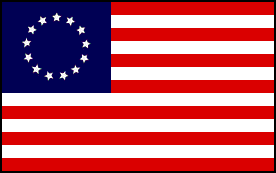
A LITTLE JEFFERSON TRIVIA
While serving in Congress, Thomas Jefferson introduced a bill that attempted to bar slavery from all future states admitted to the Union, a measure that might later have prevented the U.S. Civil War if it had not been defeated – by a single vote.

The democratic custom of shaking hands instead of bowing at White House receptions was initiated in the Blue Room by Thomas Jefferson early in his first term as U.S. president.

The only time in American history that the president and vice president were members of different political parties occurred in 1797, when Thomas Jefferson, Republican, became vice president under John Adams, a Federalist.

There were eight presidents not born in the United States. George Washington, John Adams, Thomas Jefferson, James Madison, James Monroe, John Quincy Adams, Andrew Jackson and William Henry Harrison were all born in the 13 original colonies, and as such are relative non-natives.

Thomas Jefferson was so upset with the Continental Congress's editing of his original Declaration of Independence that, for years afterward, he sent copies of both the original and the final versions to friends and asked their opinions as to which version they preferred.

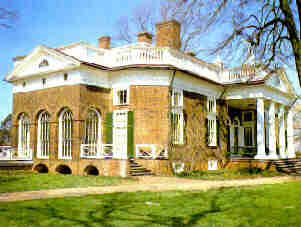
Before we get into Jefferson's life in public service, let's spend some time visiting Monticello.
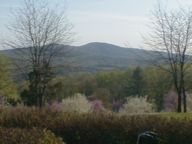
From Jefferson's "Little Mountain", he could look out across the rolling hills and gentle mountains of Virginia.
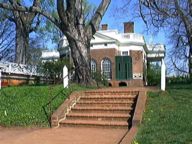
Jefferson's home is recognized as an international treasure. Monticello is the only house in America on the United Nations' prestigious World Heritage List of sites that must be protected at all costs.
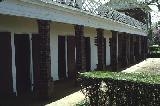
The house is constructed of brick and is Georgian Colonial in style. Monticello had a cross-axial plan like its predecessors, but unlike them stretched itself horizontally reaching out toward the sweep of its site, while service units were buried underground.

Monticello was like the primordial American home—seeking stability but also freedom, respectful of European tradition but insistent on comfort and effort-saving devices, both conventional and one of a kind.

Flowers are everywhere. Thomas Jefferson loved them and that love is exhibited throughout the grounds.
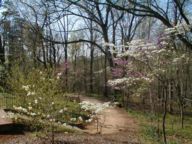
Jefferson planted 1,000 peach trees on the property.

Pathways, such as this one, make strolling the grounds a pleasant experience.
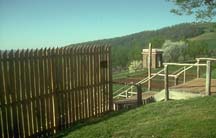
While we're still outside, let's go take a look at Mr. Jefferson's garden. Just follow me down these steps.
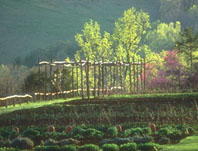
Thomas Jefferson wrote that "the greatest service which can be rendered any country is to add a useful plant to its culture."
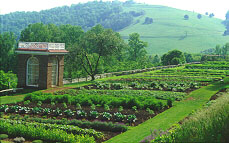
The gardens at Monticello were a botanic garden, an experimental laboratory of ornamental and useful plants from around the world.
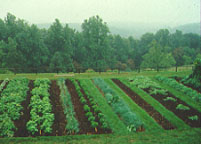
At Monticello, Jefferson cultivated over 250 vegetable varieties in his 1000-foot-long garden terrace and 170 fruit varieties in the eight-acre fruit garden, designed romantic grottoes, garden temples, and ornamental groves, and took visitors on rambling surveys of his favorite "pet trees."
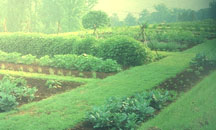
Thomas Jefferson was crazy about gardening.Would you like to see a little of the inside of Monticello? Let's go then.
CLICK HERE





















